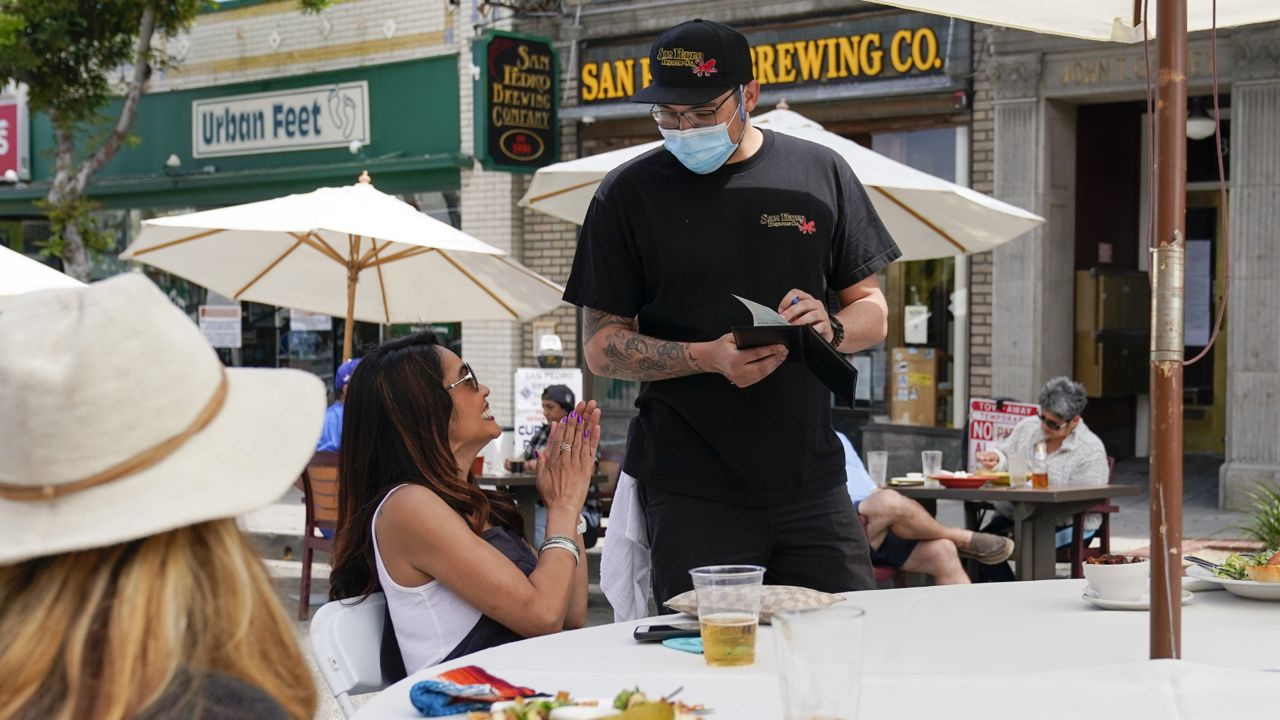LOS ANGELES (CNS) — Citing continuing outbreaks at large employment centers, Los Angeles County's health officer urged business owners again Thursday to follow coronavirus-prevention measures, stressing that lower-income essential workers are paying the price for lapses.
Dr. Muntu Davis highlighted several current outbreaks, including an 84-patient outbreak among 10 UPS facilities scattered across the county.
"We continue to see outbreaks in manufacturing facilities, food processing facilities, the warehouses environments where workers are indoors together for long periods of time and many may not have adequate personal protective equipment," Davis said. "Our outbreaks management branch and environmental health inspector teams have been very busy conducting site visits at various [work sites] across the county to make sure that employers are doing all they can to keep their employees safe.
"We've seen what happens when workplace protections and practices aren't in place — outbreaks occur and people can die," he said.
Davis said the UPS outbreak involved facilities in Los Angeles, Bell, Gardena, Vernon, Cerritos, Sylmar, and Van Nuys. Three of those individual outbreaks appeared to be "epidemiologically linked or connected." The affected employees served in a wide range of positions, and no deaths from the outbreak have been reported, he said.
Davis noted that a smaller UPS outbreak involving 10 employees occurred in June, but investigators concluded that those infections likely occurred in the community, not at the workplace.
"I know the biggest question that people may have with this is, can I get COVID-19 from a package or mail," Davis said. "According to the Centers for Disease Control, the virus can survive for a short period of time on some surfaces, but it's unlikely to spread from mail, products, or packaging. Most research shows that COVID-19 is spread primarily through droplets. It may be possible that someone can get COVID-19 from touching a surface or an item that has the virus on it and then touching their nose, mouth, or possibly their eyes. But this is not the main way the virus spreads."
He recommended that people wash their hands after opening a package or mail.
Davis also reported an outbreak at Trojan Battery Co. in Santa Fe Springs involving 61 employees in two separate locations, with three hospitalizations and one death. He said the site has been inspected, and while "correctable violations" were found, none of them warranted closure of the business.
Davis said a total of 77 cases have now been reported at the SoFi Stadium construction site in Inglewood. He called that project a "complicated" work site with 60 subcontractors. According to Davis, out of the 60 subcontractors at the project, 33 of them had at least one coronavirus case, and eight of those involved had three or more cases. He said the stadium site is overall in compliance with health orders and officials have "taken the necessary steps that are required of them."
Davis said workplace outbreaks often have a large impact on lower-income workers and people of color, contributing to the disproportionate numbers of cases and hospitalizations among those communities. He displayed charts showing sharp increases in cases among Latino and Black residents starting in early July, roughly coinciding with wide-ranging business reopenings.
The county has reported improvements in overall virus trends in recent weeks, with hospitalizations trending downward, along with average daily deaths and case numbers.
As of Wednesday, a total of 214,283 cases have been confirmed countywide since the start of the pandemic, along with 5,112 deaths.
About 92 percent of people who have died from the illness had underlying health conditions, a percentage that has remained constant throughout the pandemic. County public health director Barbara Ferrer noted Wednesday that while the percentage is high, it still means that eight percent of people had no health issues and succumbed to the disease nonetheless.
"This disease can be devastating whether you have underlying health conditions or you don't," she said.
Ferrer again noted that younger residents continue to represent the bulk of new coronavirus cases. She said residents aged 18 to 49 represent more than 60 percent of all new cases, and they "are driving infections in Los Angeles County at this time."
She said the 18-29 age group has "the highest case rate among all age groups" in the county.
Residents between 30 and 65 represent roughly half of all hospitalizations in the county, while those 18-29 are about 9 percent to 10 percent of hospital patients.
As of Wednesday, there were 1,538 people hospitalized in the county due to coronavirus, with 32 percent of them in intensive care units and 19 percent on ventilators. As recently as about two weeks ago, daily hospitalizations were above 2,000.
The drop in hospitalization numbers and death rates has led health officials to express optimism about the success of efforts to control the spread of the virus. But the virus is still widespread.
Davis said Thursday that despite the positive trends, residents and businesses must continue taking health precautions.
"It's important that all of us as individuals, as business owners, as business operators, take the necessary steps to prevent the spread of COVID- 19," he said. "This is our new normal. We must wear face coverings. We must ensure physical distancing and we must practice hand hygiene. We do this to protect our workforce, our community, and ourselves, to continue our path to recovery, to get our children to school, and get more of our community members back to making a living."



